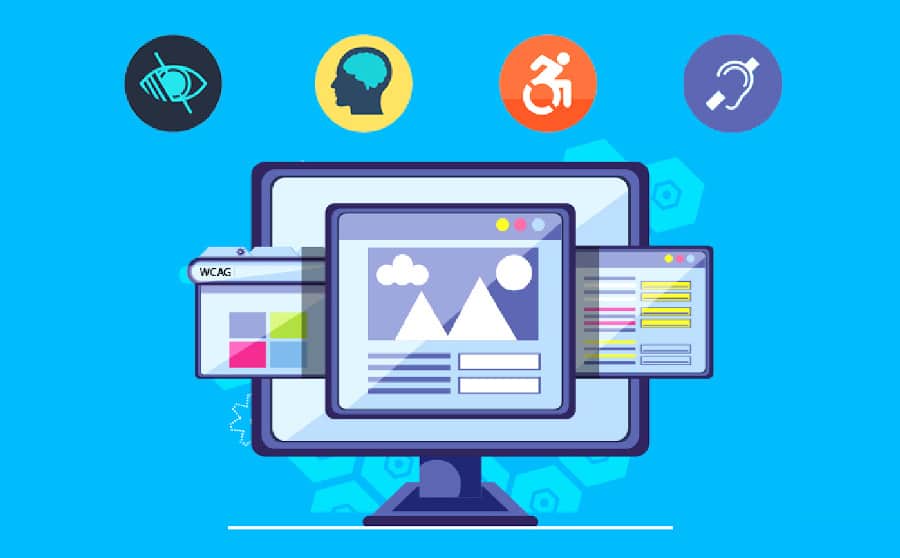Exploring the importance of Technological accessibility
Exploring why technological accessibility and inclusive design are of paramount importance in today's world

In today's rapidly evolving world, the phrase "technological accessibility" hardly seems like an exaggeration.
With the advent of cutting-edge technology, we have witnessed a transformative wave that has reshaped industries, societies, and the way we live our lives.
One of the central aspects of this revolution is the constant pursuit of innovation and the development of new tools and services. However, as we enthusiastically embrace these advancements, we must also prioritize technological accessibility and inclusive design to ensure that the benefits of the digital age reach everyone, regardless of their abilities or circumstances.
Understanding the Technological Accessibility
The World Wide Technology (WWT) industry plays a pivotal role in shaping our modern world. It encompasses a wide array of sectors, from information technology (IT) services to the development and deployment of cutting-edge technologies. These innovations are at the forefront of the technological revolution, pushing the boundaries of what is possible and constantly redefining our capabilities.
Viva Technology, a global event dedicated to celebrating innovation and technology, showcases the incredible strides we have made in this realm. Yet, amidst all the excitement and promise, it is crucial to remember that true progress is not measured solely by the sophistication of technology. Instead, it should be evaluated by the extent to which it is accessible and beneficial to all members of society.
The Digital Divide
One of the most pressing issues in today's tech-driven world is the digital divide. This divide refers to the gap between those who have access to digital technologies and the internet and those who do not. Unfortunately, this divide is not evenly distributed, with marginalized communities, individuals with disabilities, and underserved populations often bearing the brunt of this disparity.
As we continue to advance in the world of IT services and cutting-edge technology, it is our collective responsibility to bridge this divide. To achieve this, we must prioritize technological accessibility and inclusive design in all our endeavors.
What is Technological Accessibility?
Technological accessibility refers to the design and implementation of digital products, services, and environments that can be used by individuals with a wide range of abilities and disabilities. It aims to remove barriers that prevent people from fully participating in the digital world. This is not only a matter of compliance with laws and regulations but, more importantly, a commitment to ensuring equal opportunities for everyone.
The Role of Inclusive Design
Inclusive design is the foundation upon which technological accessibility is built. It involves designing products and services from the outset with the needs of all users in mind. Inclusivity goes beyond just accommodating people with disabilities; it considers factors such as age, gender, culture, and socioeconomic background. By adopting inclusive design principles, we can create a more equitable digital landscape.
The Benefits of Technological Accessibility
- Expanding Market Reach: When products and services are accessible to a wide range of users, companies open themselves up to a larger customer base. An inclusive approach can lead to increased market share and revenue.
- Enhancing Innovation: Inclusivity drives innovation. When designers and developers consider a diverse set of perspectives, they are more likely to come up with creative solutions and unique features that benefit everyone.
- Improving User Experience: Accessible designs often result in improved user experiences for all users. Features like larger text options, clear navigation, and voice commands can make digital interactions smoother and more efficient.
- Meeting Legal and Ethical Requirements: Many countries have laws and regulations that require digital products and services to be accessible. Adhering to these standards is not only a legal obligation but also an ethical one.
- Fostering Corporate Social Responsibility: Demonstrating a commitment to accessibility and inclusivity can enhance a company's reputation and contribute to its corporate social responsibility efforts.
Examples of Inclusive Design
Several tech giants have recognized the importance of inclusive design and have incorporated it into their products and services:
1. Apple:
Apple is renowned for its commitment to accessibility. Features like VoiceOver (a screen reader), Magnifier, and Sound Recognition have made iOS devices more accessible to individuals with disabilities.
2. Microsoft:
Microsoft's Accessibility Insights tool helps developers identify and address accessibility issues in their applications, promoting a more inclusive software development process.
3. Google:
Google's Live Transcribe and Sound Amplifier apps empower individuals with hearing impairments by providing real-time transcription and audio enhancement.
Steps Towards Technological Accessibility
As we navigate the ever-evolving landscape of IT services and cutting-edge technology, it's imperative that we prioritize accessibility and inclusivity. Here are some essential steps to take:
1. Education and Awareness:
Promote awareness within your organization about the importance of accessibility and inclusivity. Invest in training and resources for your teams to ensure they understand the needs of diverse users.
2. Inclusive Design Frameworks:
Adopt inclusive design frameworks, such as the ones proposed by the World Wide Web Consortium (W3C), to guide your design and development processes.
3. User Testing:
Engage people with disabilities and other underrepresented groups in user testing. Their feedback is invaluable in identifying and addressing accessibility issues.
4. Compliance with Standards:
Familiarize yourself with accessibility standards and guidelines, such as the Web Content Accessibility Guidelines (WCAG), and ensure that your digital products and services meet these standards.
5. Accessibility Tools and Resources:
Utilize accessibility tools and resources, such as screen readers, color contrast checkers, and accessibility auditing software, to evaluate and improve your digital assets.
6. Inclusive Hiring Practices:
Diversify your workforce to include individuals with disabilities and from various backgrounds. Their unique perspectives can drive innovation and ensure inclusivity.
In the era of cutting-edge technology and the ongoing technological revolution, the principles of technological accessibility and inclusive design must be at the forefront of our priorities. It is not enough to merely develop advanced IT services and edge technology; we must ensure that these innovations are accessible to everyone, regardless of their abilities or circumstances. By embracing inclusivity, we not only create more equitable digital experiences but also tap into new markets, drive innovation, and fulfill our ethical and legal obligations.
As we continue to celebrate events like Viva Technology, let us remember that true progress is measured not only by the heights of our technological achievements but also by our commitment to leaving no one behind in this digital age. Let's build a future where technology truly empowers all.
What's Your Reaction?
















